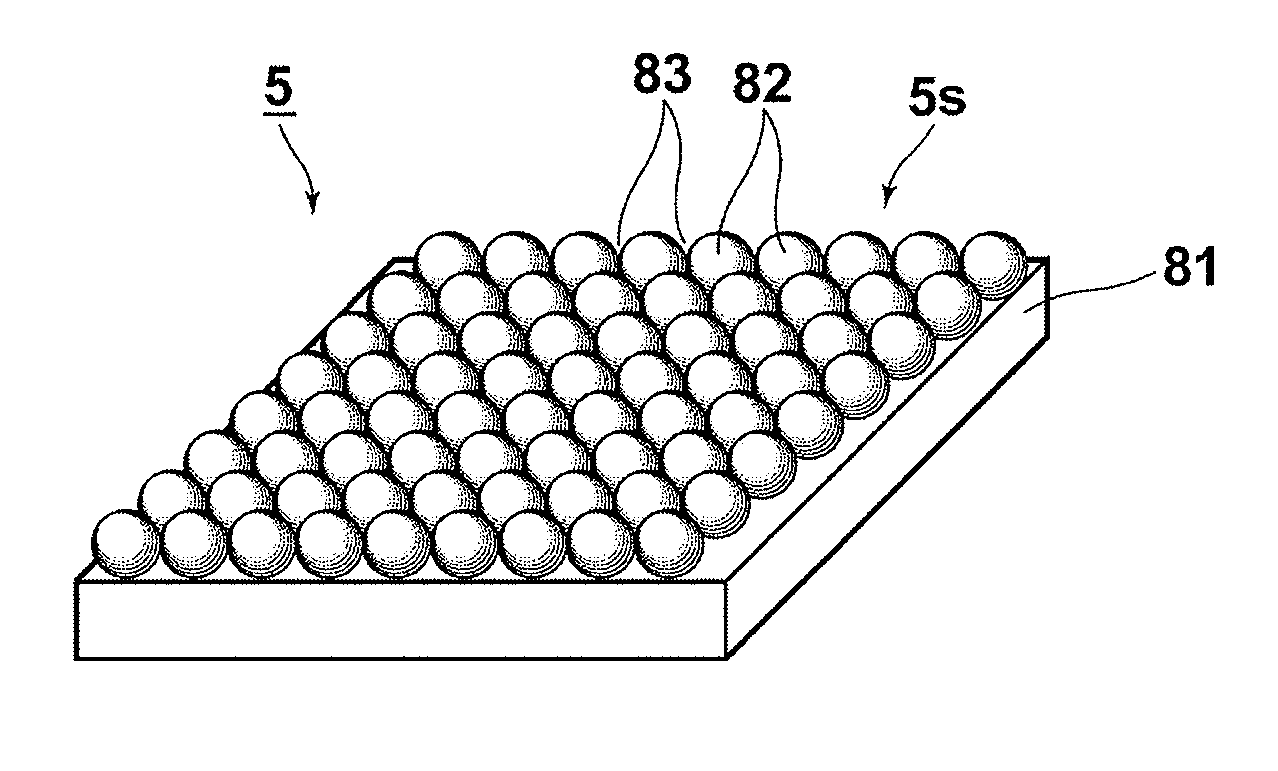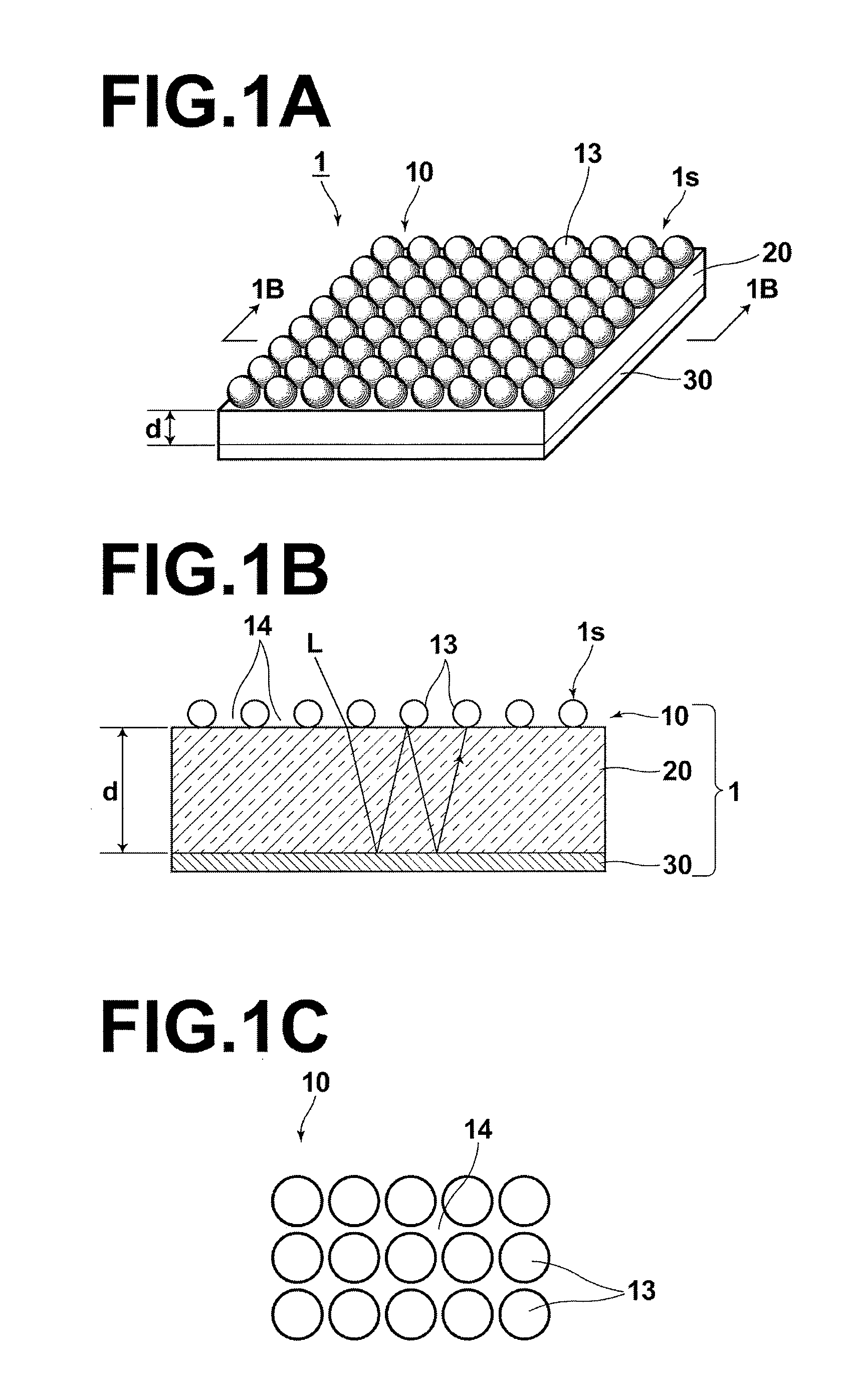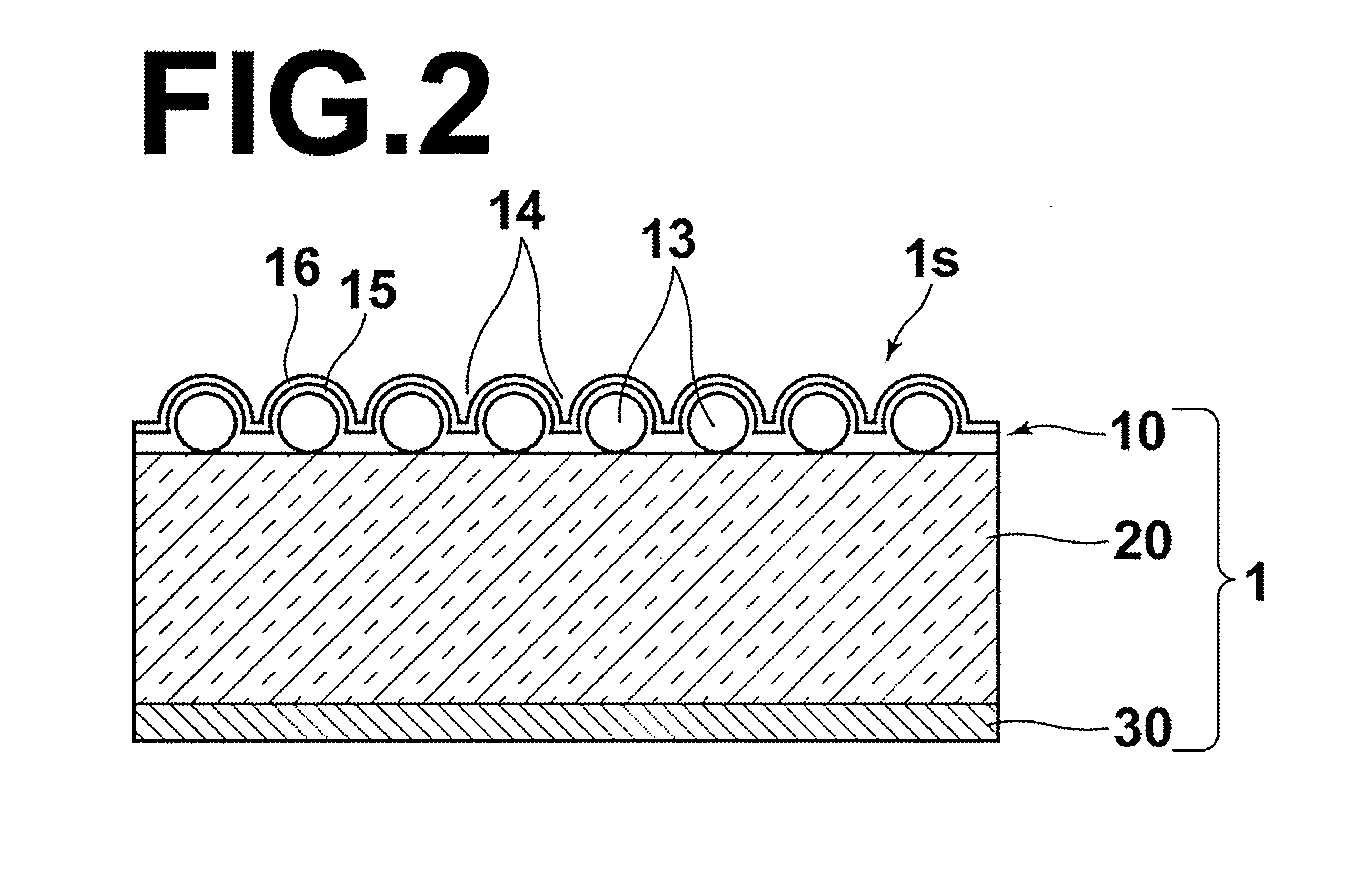Substrate for mass spectrometry and mass spectrometry method
a mass spectrometry and substrate technology, applied in the field of substrate, can solve the problems of long analysis time period, non-uniform detection, low sensitivity of detecting analyte that is not easily ionized, etc., and achieve the effect of effective enhancement of electric field, enhanced electric field, and increased energy of laser beams
- Summary
- Abstract
- Description
- Claims
- Application Information
AI Technical Summary
Benefits of technology
Problems solved by technology
Method used
Image
Examples
first embodiment
of Substrate for Mass Spectrometry
[0057]A substrate for mass spectrometry according to a first embodiment of the present invention will be described with reference to FIGS. 1A through 1C. The substrate for mass spectrometry according to the present embodiment forms an optical resonator. FIG. 1A is a perspective view, and FIG. 1B is a sectional view in the thickness direction of the substrate (sectional view along 1B-1B line). FIG. 1C is a schematic top view illustrating the arrangement of metal particles, which will be described later.
[0058]As illustrated in FIG. 1A, a substrate 1 for mass spectrometry of the present embodiment has device structure including a first reflective member 10, a transparent member 20, and a second reflective member 30. The first reflective member 10, the transparent member 20, and the second reflective member 30 are sequentially provided from the laser-beam-L-entering side (upper side in FIG. 1A). The first reflective member 10 is semi-transmissive and se...
second embodiment
of Substrate for Mass Spectrometry
[0106]With reference to FIGS. 3A through 3D, a substrate for mass spectrometry according to a second embodiment of the present invention will be described. The substrate for mass spectrometry of the present embodiment forms an optical resonator in a manner similar to the first embodiment. FIGS. 3A through 3C are perspective views illustrating the process of producing the substrate for mass spectrometry. FIG. 3D is a sectional diagram illustrating the substrate for mass spectrometry. In the present embodiment, the same reference numerals will be assigned to elements corresponding to the elements of the first embodiment, and explanation of such elements will be omitted.
[0107]As illustrated in FIGS. 3C and 3D, a substrate 2 for mass spectrometry of the present embodiment has the first reflective member 10, the transparent member 20 and the second reflective member 30 in a manner similar to the first embodiment. The first reflective member 10, the trans...
third embodiment
of Substrate for Mass Spectrometry
[0128]With reference to FIG. 4, a substrate for mass spectrometry according to a third embodiment of the present invention will be described. FIG. 4 is a sectional diagram of the substrate for mass spectrometry. The substrate for mass spectrometry according to the third embodiment forms an optical resonator in a manner similar to the substrates for mass spectrometry according to the first embodiment and the second embodiment. In the present embodiment, same reference numerals will be assigned to elements corresponding to the elements of the first embodiment, and explanation of the elements will be omitted.
[0129]As illustrated in FIG. 4, a substrate 3 for mass spectrometry of the present embodiment has the first reflective member 10, the transparent member 20 and the second reflective member 30 in a manner similar to the first embodiment. The first reflective member 10, the transparent member 20 and the second reflective member 30 are sequentially pr...
PUM
 Login to View More
Login to View More Abstract
Description
Claims
Application Information
 Login to View More
Login to View More - R&D
- Intellectual Property
- Life Sciences
- Materials
- Tech Scout
- Unparalleled Data Quality
- Higher Quality Content
- 60% Fewer Hallucinations
Browse by: Latest US Patents, China's latest patents, Technical Efficacy Thesaurus, Application Domain, Technology Topic, Popular Technical Reports.
© 2025 PatSnap. All rights reserved.Legal|Privacy policy|Modern Slavery Act Transparency Statement|Sitemap|About US| Contact US: help@patsnap.com



